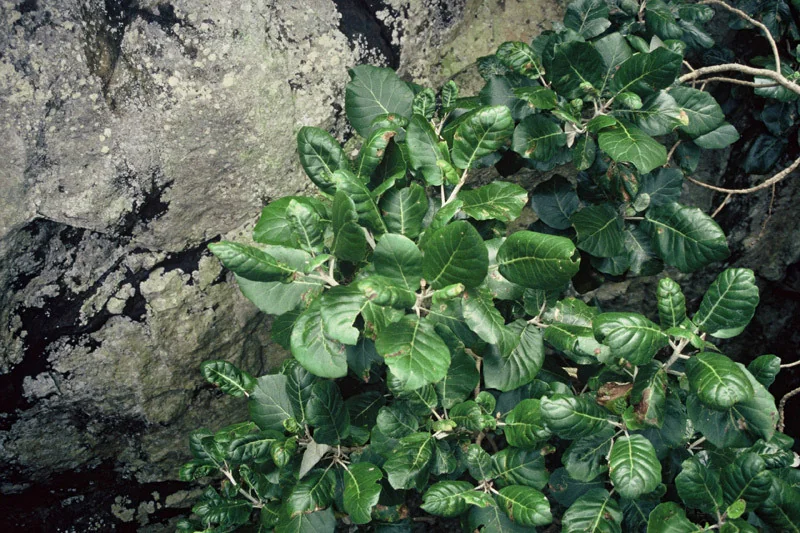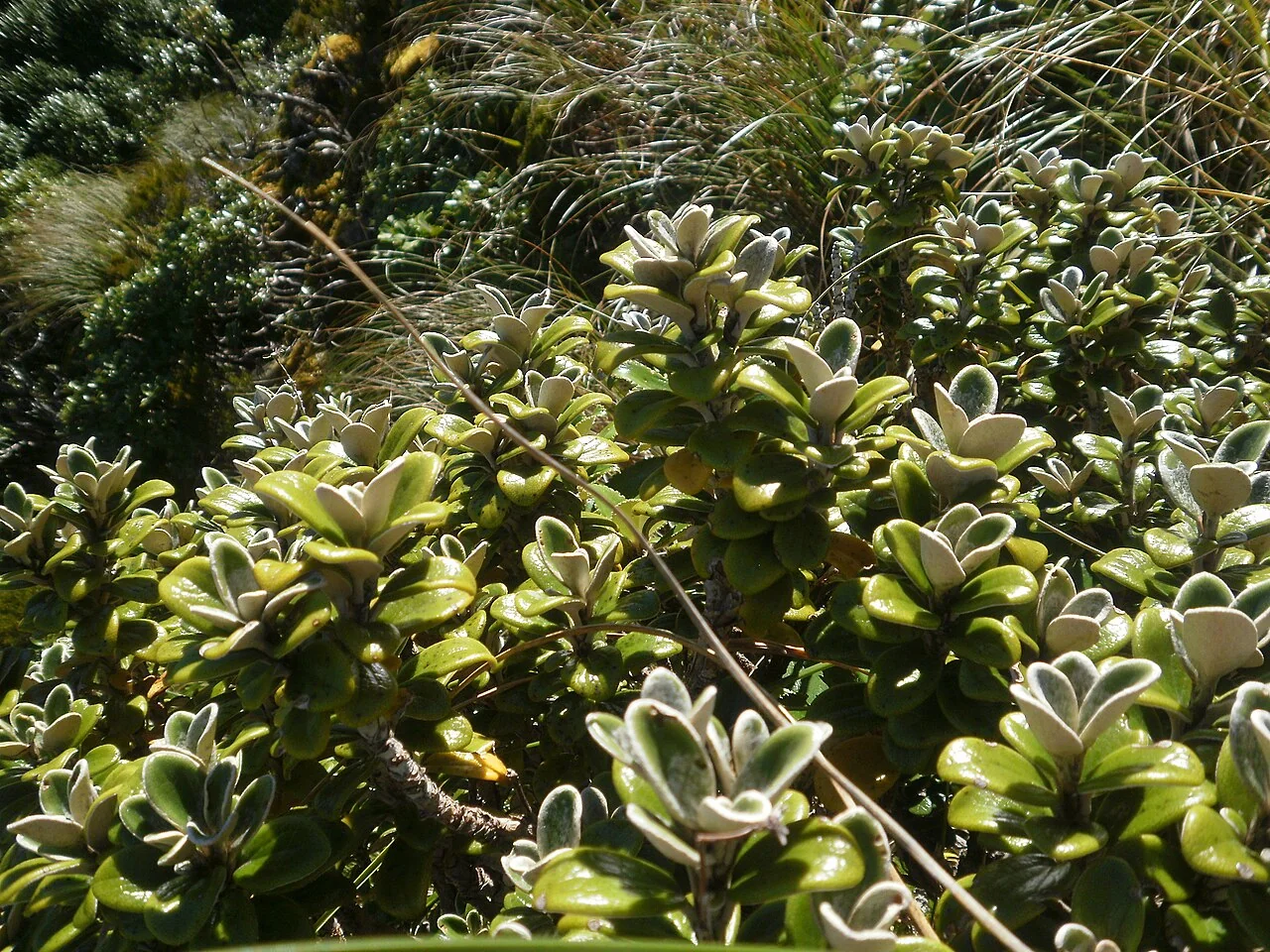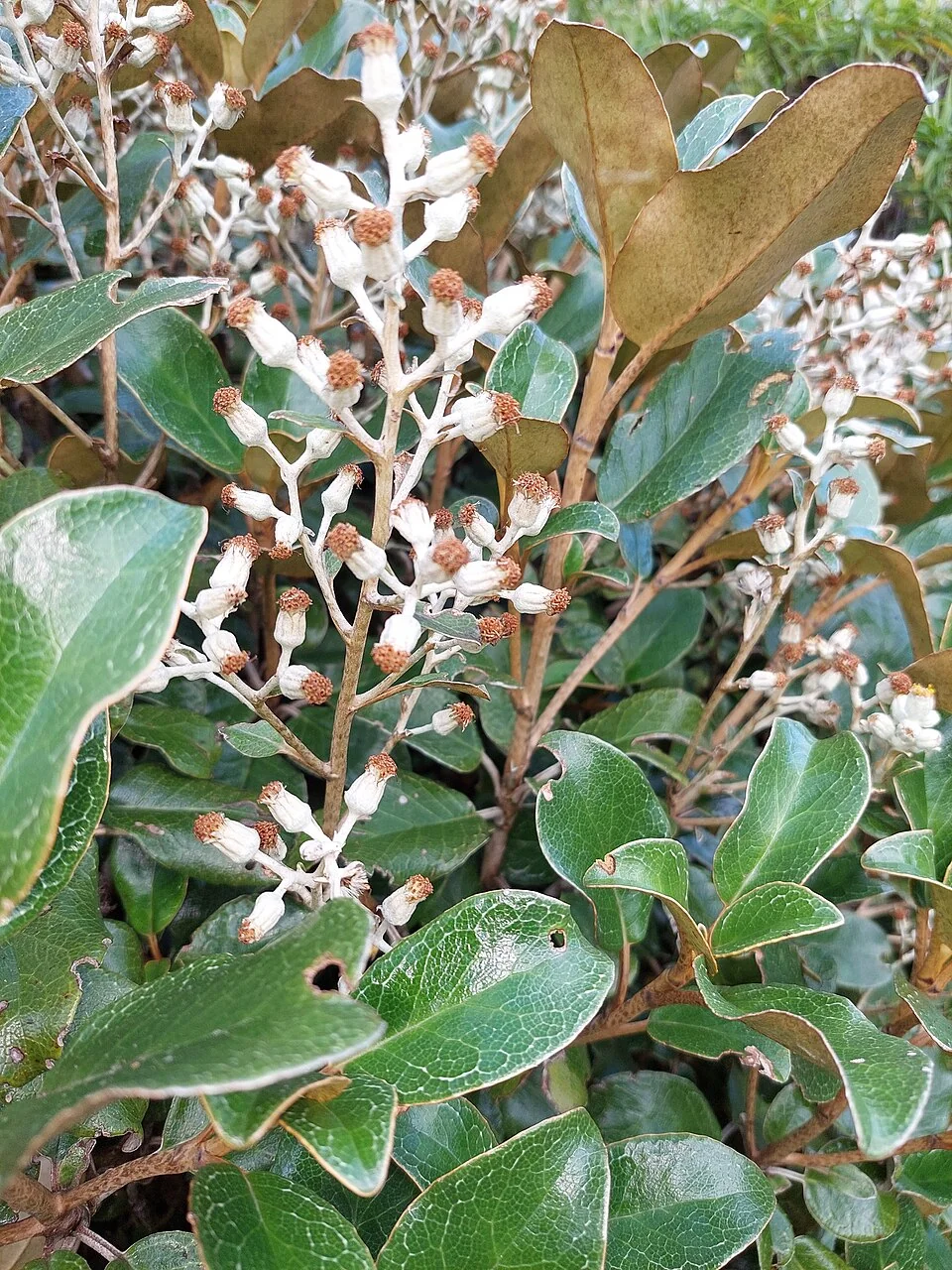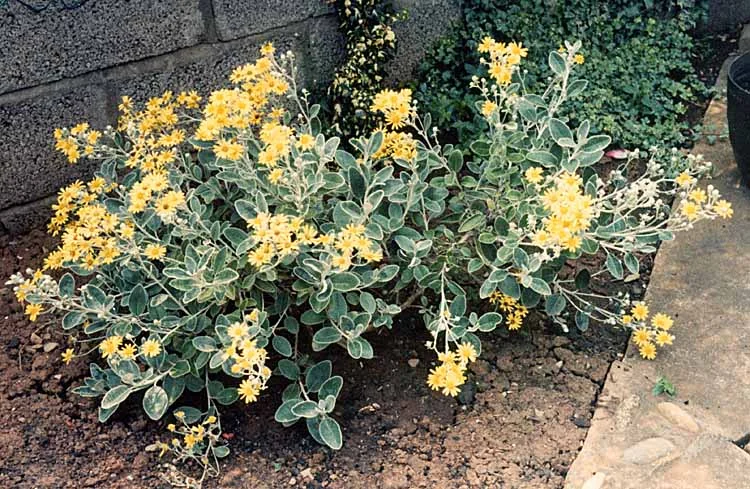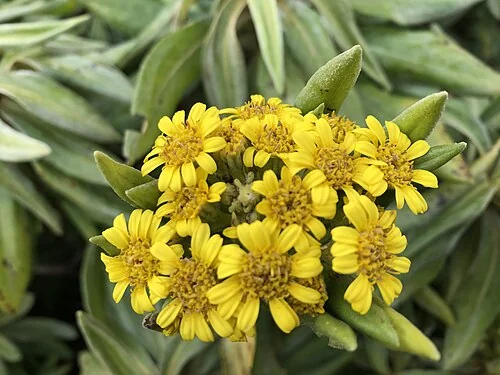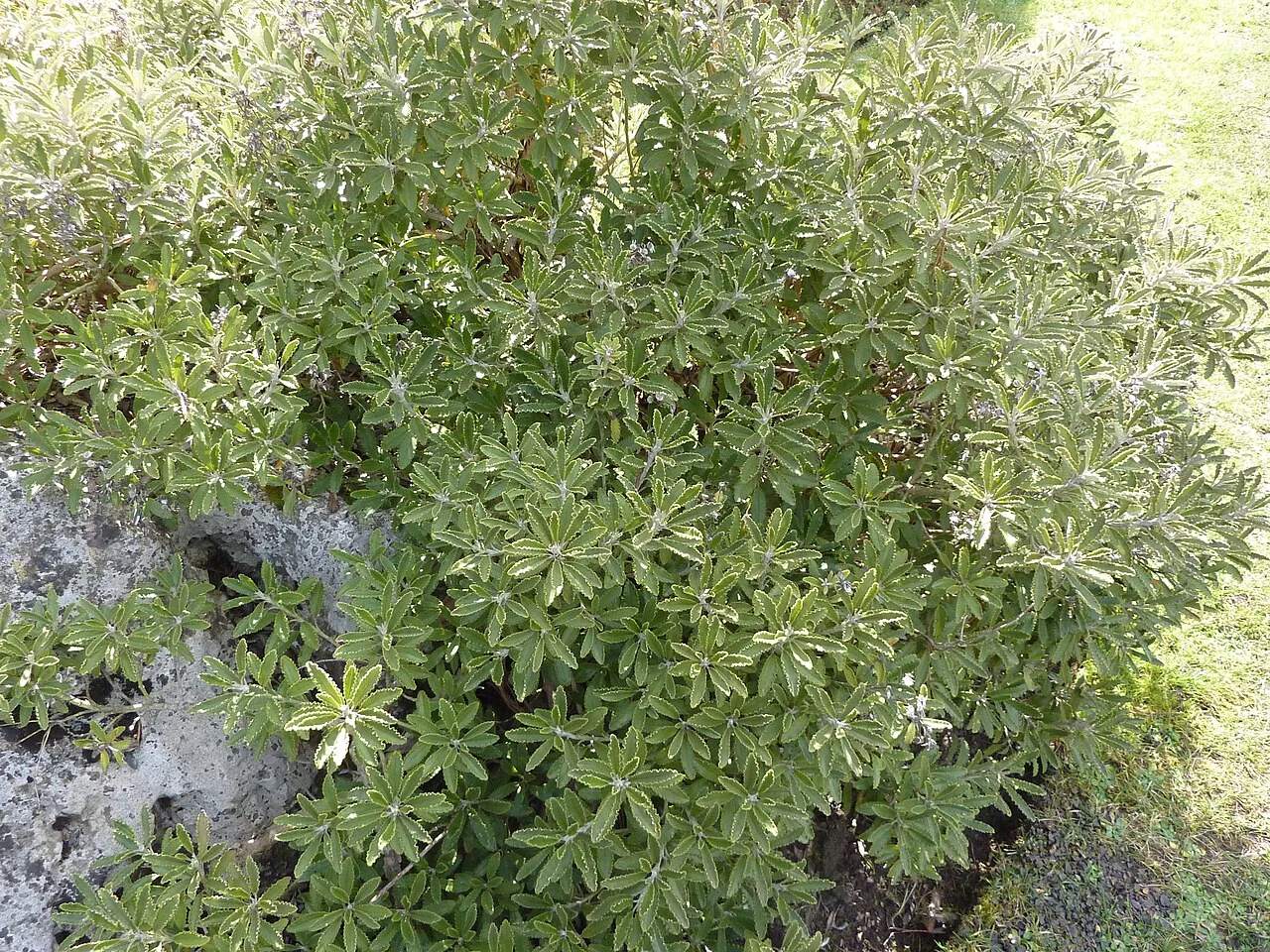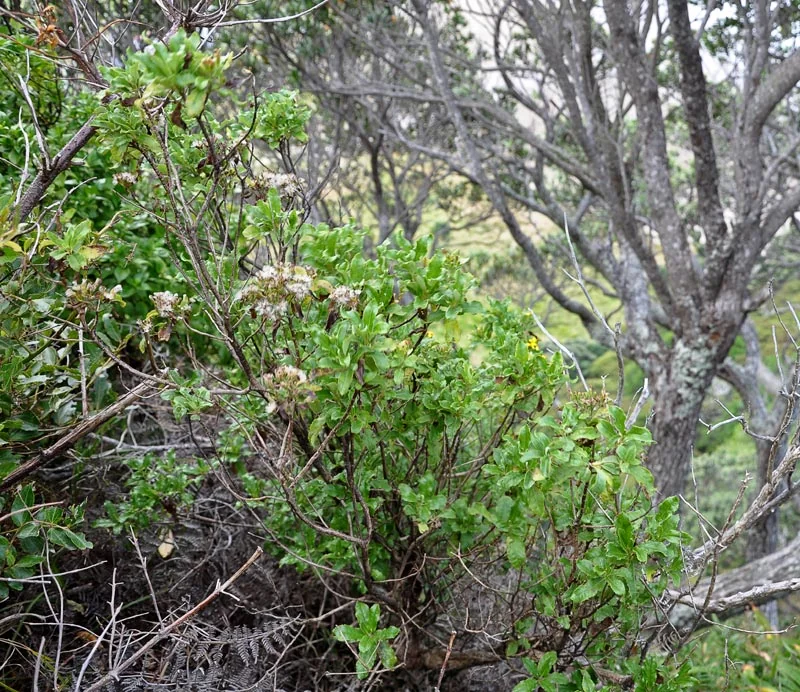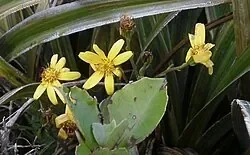
Mountain Daisy
Brachyglottis lagopus
Explore more NZ native plant guides in our index .
Introduction
About Mountain Daisy
Brachyglottis lagopus , commonly known as Mountain Daisy or Yellow Rock Daisy, is a distinctive small herbaceous perennial endemic to New Zealand's alpine and subalpine regions. This remarkable plant forms compact, woolly-leaved rosettes with characteristic spoon-shaped leaves covered in dense, silvery hairs that provide essential protection against harsh mountain conditions including intense UV radiation, extreme temperature fluctuations, and desiccating winds. The cheerful bright yellow daisy-like flowers appear on short stalks during summer, creating spectacular displays against the stark alpine landscape. With its exceptional hardiness and unique woolly texture, this endemic species represents a perfect example of New Zealand's remarkable alpine flora adaptations, thriving in rocky outcrops and scree slopes where few other plants can survive.

Plant Description
Brachyglottis lagopus , commonly known as Mountain Daisy or Yellow Rock Daisy, is a small herbaceous perennial endemic to New Zealand's alpine and subalpine regions. It forms compact rosettes of spoon-shaped leaves, often covered in dense, silvery hairs that protect it from harsh mountain conditions. The plant produces cheerful bright yellow daisy-like flowers on short stalks during summer. It is a hardy species, typically growing up to 45 cm tall, and is valued for its unique woolly texture and ability to thrive in rocky outcrops and scree slopes.
Quick Facts
Plant Summary
| Scientific Name | Brachyglottis Lagopus |
|---|---|
| Height | 10-20 cm |
| Spread | 10-20 cm |
| Water Needs | Low; prefers well-drained soil |
| Light | Full sun |
| Frost Tolerance | Very high |
| Salt Tolerance | Low |
| Growth Rate | Slow |
| Lifespan | Perennial |
Climate Best Suited to
Brachyglottis lagopus is naturally distributed throughout the alpine and subalpine zones of New Zealand's South Island, particularly abundant in the Canterbury and Otago high country regions above the bush line. This hardy endemic species has evolved to thrive in some of the country's most challenging environments, including exposed ridges, rocky outcrops, and scree slopes where temperatures can range from -15°C in winter to over 30°C in summer. Its exceptional tolerance to frost, strong winds, and intense alpine conditions makes it invaluable for high-altitude restoration projects and specialized alpine gardening applications.
Regional Suitability
| City | Climate Suitability |
|---|---|
| Whangārei | Ideal |
| Auckland | Ideal |
| Hamilton | Ideal |
| Tauranga | Ideal |
| Rotorua | Ideal |
| Gisborne | Ideal |
| New Plymouth | Ideal |
| Napier | Ideal |
| Whanganui | Ideal |
| Palmerston North | Ideal |
| Wellington | Ideal |
| Nelson | Ideal |
| Christchurch | Ideal |
| Dunedin | Ideal |
| Invercargill | Ideal |
Habitat
Natural Distribution
Brachyglottis lagopus , commonly known as Mountain Daisy or Yellow Rock Daisy, is a perennial flowering plant endemic to New Zealand. It is primarily found in the alpine and subalpine zones of the South Island, particularly abundant in the Canterbury and Otago high country regions above the bush line. Its natural habitat ranges from lowland to montane grasslands and rocky areas, occurring at altitudes between 300 and 1500 meters.
This species is highly adaptable and can be found in a wide variety of habitats, often in rocky places, scree slopes, and exposed ridges. This preference for rocky, well-drained sites suggests a critical need for sharp drainage around the plant's crown to prevent rot. It thrives in conditions with intense UV radiation, extreme temperature fluctuations, and desiccating winds, showcasing its exceptional hardiness and adaptations to harsh alpine environments.
Plant Conservation
Brachyglottis lagopus is classified as "Naturally Uncommon; Not Threatened" under the New Zealand Threat Classification System. This endemic alpine species represents an important component of New Zealand's specialized high-altitude flora, thriving in the harsh conditions of the South Island's alpine and subalpine zones above the bush line.
While the species is not currently threatened, local populations can face pressure from grazing and habitat modification in sensitive alpine environments. The plant's preference for well-drained, rocky sites makes it particularly vulnerable to changes in soil composition and drainage patterns that can result from livestock grazing and infrastructure development in high-country areas.
Conservation efforts focus on protecting key alpine habitats and monitoring population trends in areas where grazing pressure or habitat modification may impact local populations. The species' remarkable adaptations to extreme alpine conditions make it valuable for understanding plant evolution and survival strategies in New Zealand's mountain ecosystems.
For gardeners, cultivating Mountain Daisy in appropriate alpine-style plantings helps preserve genetic diversity and reduces collection pressure on wild populations. Its success in cultivation also contributes to public appreciation of New Zealand's unique alpine flora and the importance of protecting these specialized mountain habitats.
Growing Requirements
Soil Requirements
Prefers very well-drained, gritty, and low-fertility soil. It will not tolerate wet or humid conditions.
Light Requirements
Must have full sun to thrive.
Water Requirements
Extremely drought-tolerant once established. Water sparingly, if at all.
Planting Guide
-
When to Plant
Plant in autumn or spring.
-
Site Preparation
Choose a sunny, very well-drained site.
-
Planting and Aftercare
Dig a hole twice the width of the pot. Add plenty of grit to the planting hole to improve drainage. Place the plant in the hole and backfill with soil. Water well.
Ecological Significance
Brachyglottis lagopus , commonly known as Mountain Daisy or Yellow Rock Daisy, is a small flowering plant native and endemic to New Zealand, playing a specific ecological role in its alpine and subalpine environments.
- Biodiversity Contribution: As an endemic species, Brachyglottis lagopus is a unique component of New Zealand's native flora, contributing to the overall biodiversity of its harsh alpine habitat. Its presence enriches the plant communities in these challenging environments.
- Dispersal Mechanism: The plant produces pappate cypselae, which are fruits equipped with a pappus, facilitating wind dispersal. This efficient mechanism allows for the spread and colonization of new areas, contributing to plant community dynamics and the resilience of alpine ecosystems.
- Adaptability: Brachyglottis lagopus exhibits significant morphological plasticity, meaning its physical form can vary in response to environmental conditions. This adaptability allows it to thrive in different microhabitats within its range, from rocky outcrops to montane grasslands, showcasing its resilience to extreme alpine conditions.
- Conservation Status: Currently, Brachyglottis lagopus is classified as "Not Threatened" in New Zealand under the New Zealand Threat Classification System, indicating a stable population within its ecosystem.
Uses and Significance
Garden Uses
- An excellent plant for rock gardens, scree gardens, and alpine troughs.
- Its compact size and cheerful flowers make it a charming addition to any alpine-themed landscape.
Landscaping Uses
Garden Design Applications
Brachyglottis lagopus , commonly known as Mountain Daisy or Yellow Rock Daisy, is a small herbaceous perennial highly valued for its landscaping potential, particularly in alpine-themed gardens and rockeries. Its unique adaptations to harsh mountain conditions make it a distinctive and hardy choice.
- Ornamental Value: It is primarily cultivated for its aesthetic appeal, featuring cheerful bright yellow daisy-like flowers that provide a vibrant display against its compact, woolly-leaved rosettes. The silvery hairs on its leaves offer year-round interest and protection.
- Rock Gardens and Scree Gardens: Its preference for very well-drained, gritty, and low-fertility soil, coupled with its compact size, makes it an excellent plant for rock gardens, scree gardens, and alpine troughs. It thrives in conditions that mimic its natural rocky habitats.
- Alpine Meadows and Edging: When planted in groups or mass, it can create a miniature alpine meadow effect, adding a naturalistic touch to specialized landscapes. Its compact growth also makes it suitable for edging pathways or borders in alpine-themed areas.
- Container Planting: Due to its small size, Brachyglottis lagopus can be successfully grown in small pots or containers, allowing gardeners to appreciate its unique features up close, even in limited spaces.
- Hardiness and Adaptability: This plant thrives in full sun and is exceptionally frost-tolerant, making it suitable for exposed sites. Its ability to withstand drought once established further enhances its value in low-maintenance alpine landscapes.
For successful landscaping, ensure excellent drainage around the plant's crown to prevent rot, and provide full sun exposure. While it is generally low-maintenance, occasional removal of completely dead foliage can help maintain its neat appearance.
Seasonal Care Calendar
Spring
- New growth emerges from rosette centers as temperatures warm
- Apply very light top-dressing of fine gravel to refresh surface drainage
- Check for winter damage to growing points and remove any dead material
Summer
- Peak flowering period with brilliant yellow daisy displays
- Ensure excellent air circulation around plants during humid weather
- Minimal watering required even during dry spells
Autumn
- Seed collection possible from mature flower heads for propagation
- Reduce any supplemental watering as plants prepare for dormancy
- Leave spent foliage intact for winter protection
Winter
- Plants enter natural dormancy and require no intervention
- Exceptional frost tolerance with no protection needed
- Monitor drainage to prevent ice formation around crown
Pruning and Maintenance
Minimal Intervention Required
Mountain Daisy requires virtually no pruning or maintenance beyond occasional removal of completely dead foliage. The dense, woolly leaf rosettes naturally shed older leaves and maintain their compact form without human intervention. Avoid disturbing the plant's natural architecture, as the characteristic silvery-white woolly covering is essential for survival in harsh alpine conditions and should never be removed or cleaned away.
Prune Mountain Daisy lightly to maintain structure; remove damaged shoots and avoid hard cuts on older wood.
How to Grow Mountain Daisy
From Seeds
Seed propagation represents the natural reproductive method for Mountain Daisy, though it requires specific cold treatment and alpine-adapted growing conditions to achieve success with this specialized high-altitude species. This hardy alpine plant produces wind-dispersed seeds equipped with pappus structures that naturally scatter from the parent plant during late summer and autumn, requiring specific environmental conditions to break dormancy and germinate successfully. For cultivation purposes, collect fresh seeds from mature flower heads when they have turned from yellow to fluffy white, indicating peak seed maturity and viability. Timing is critical as seeds lose viability quickly once fully dispersed, so monitor plants closely during the ripening period. Fresh seed collected in late summer should be sown immediately in autumn onto a gritty, free-draining propagation mix that replicates the rocky, well-drained soils of the plant's natural alpine habitat. Use a mixture of equal parts quality seed-raising mix, coarse sand, and perlite to ensure the excellent drainage essential for preventing seed rot in these mountain-adapted species. Seeds require a natural cold stratification period over winter, mimicking alpine conditions with temperatures around 0-5°C for 8-12 weeks to break the dormancy mechanisms that prevent germination until suitable growing conditions return. Surface-sow seeds without covering as light aids germination, and maintain consistent moisture without waterlogging throughout the stratification period. Place seed trays in an unheated cold frame or refrigerator to provide the necessary cold treatment, checking periodically to ensure the growing medium remains moist but not saturated. Germination typically occurs in spring following stratification, with seedlings developing slowly but establishing robust root systems characteristic of alpine specialists adapted to harsh mountain environments. Young seedlings require protection from extreme conditions and should be grown in controlled environments for their first growing season before gradual acclimatization to outdoor conditions. This method is particularly valuable for conservation work and for gardeners seeking to establish authentic alpine plant communities in suitable rock garden or scree conditions.
From Semi-Hardwood Cuttings
Semi-hardwood cutting propagation offers a reliable alternative method for multiplying Mountain Daisy, particularly valuable when working with superior forms or when seed production is limited in cultivation. This technique takes advantage of the plant's ability to develop roots from stem cuttings during the growing season, providing genetically identical plants that maintain all the characteristics of the parent specimen. The optimal timing for taking cuttings is during late spring to early summer when new growth has begun to firm up but remains flexible, typically 8-12 weeks after the initial spring growth flush. Select healthy, non-flowering shoots from the current season's growth that are approximately 5-8cm in length, choosing material from the vigorous outer portions of the plant rather than weak inner growth. Take cuttings early in the morning when plant tissues are fully hydrated, using clean, sharp secateurs to make clean cuts just below a node where root development will be most successful. Remove the lower leaves from each cutting, leaving only 2-3 pairs of upper leaves to reduce moisture loss while maintaining sufficient photosynthetic capacity. Prepare a well-draining cutting medium using equal parts peat moss, perlite, and coarse sand that provides the good drainage essential for preventing cutting rot while maintaining adequate moisture. Dip cutting bases in rooting hormone containing IBA (indole-3-butyric acid) to encourage rapid root development, though this alpine species often roots readily without treatment. Insert cuttings into the prepared medium, ensuring good contact between the cutting base and growing medium while maintaining spacing to allow air circulation. Place cutting containers in a protected environment with bright, indirect light and high humidity, using misting systems or humidity domes to maintain optimal conditions for root development. Maintain temperatures around 18-22°C and provide bottom heat if available to encourage root formation, which typically occurs within 4-8 weeks under suitable conditions. Monitor cuttings regularly for signs of new growth and root development, gradually reducing humidity as roots establish to prevent fungal problems. This method strikes reliably under warmth and humidity and is particularly useful for creating multiple plants from outstanding garden specimens.
From Division
Division propagation provides an effective method for multiplying established Mountain Daisy clumps, though it requires careful handling due to the plant's specialized alpine root system and slow growth characteristics. This method is particularly valuable for rejuvenating older plants that may have developed woody centers or for creating new plants from proven garden specimens that have adapted well to local growing conditions. The optimal timing for division is during early spring just as new growth begins to emerge, allowing divided sections the full growing season to establish before facing their first winter stress. Alpine plants like Mountain Daisy often have deep, extensive root systems adapted to harsh mountain conditions, so careful excavation is essential to preserve the maximum amount of root material. Begin by carefully lifting the entire clump using a garden fork, working around the perimeter to minimize root damage and preserve the delicate feeder roots essential for rapid establishment. Once lifted, examine the crown structure to identify natural division points where separate growing centers have developed, typically visible as distinct rosettes of foliage with their own root systems. Use a clean, sharp knife to divide the clump into sections, ensuring each division includes both healthy roots and sufficient top growth to support the plant during establishment. Divisions should be substantial enough to survive the transition, as smaller sections may struggle in the demanding alpine garden environment. Prepare planting sites with excellent drainage using a mixture of garden soil, coarse sand, and gravel to replicate the free-draining conditions essential for alpine plant success. Plant divisions at the same depth they were previously growing, spacing them according to their mature size while considering their slow growth rate. Water thoroughly after planting but avoid overwatering, as alpine plants are particularly susceptible to root rot in poorly drained conditions. Provide protection from extreme weather during the first growing season while divisions establish their root systems and adapt to their new locations.
Pests and Diseases
Alpine Hardiness
Generally pest and disease free.
Watch for scale and fungal leaf spots; improve airflow and avoid over-watering to limit disease pressure.
Cultural Significance
Traditional Uses and Values
While not as widely documented for traditional Māori uses as some other alpine plants, Mountain Daisy ( Brachyglottis lagopus ) was recognized for its presence in the high-country landscape. Its bright yellow flowers would have been a familiar sight to those travelling through or gathering resources in alpine areas.
Bonus Tip
Expert Growing Advice
This New Zealand native is a remarkably variable species in appearance, with leaves that can differ greatly in size and hairiness depending on its location. Interestingly, it-s not only harvested from the wild for local medicinal use but also cultivated as an ornamental garden plant.
